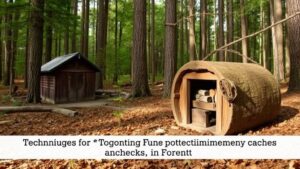Techniques for Recognizing Allusions to Historical Landmarks in Riddles
Techniques for Recognizing Allusions to Historical Landmarks in Riddles
Riddles have long been a prominent form of intellectual engagement, using language and cultural references to challenge, amuse, and educate. Among the various themes found in riddles, allusions to historical landmarks stand out, offering a rich blend of cultural significance and cognitive exercise. Recognizing these allusions requires a combination of historical knowledge, linguistic analysis, and critical thinking skills. This article explores various techniques for identifying these references within riddles, enhancing both enjoyment and appreciation of this literary form.
Understanding Historical Landmarks
Historical landmarks are sites of cultural, architectural, or historical significance. They can range from ancient wonders, such as the Pyramids of Giza, to modern marvels like the Eiffel Tower. Understanding the context and significance of these landmarks is essential for recognizing their allusions in riddles. For example, knowing that the Colosseum in Rome was an arena for gladiatorial contests can help a reader decode a riddle that references a circular battleground of ancient warriors.
Techniques for Riddle Deconstruction
Recognizing allusions requires a systematic approach to riddle deconstruction. Here are key techniques:
- Contextual Analysis: Examine the words and phrases used in the riddle. Key terms often serve as indicators of historical landmarks. For example, terms like tower, gate, or wall may suggest architectural sites such as the Tower of London or the Great Wall of China.
- Cultural Knowledge: A well-rounded knowledge of world history and notable landmarks can aid recognition. For example, a reference to three hundred could allude to the Battle of Thermopylae, suggesting a connection to the historical figure of King Leonidas and the geography of Greece.
- Symbolic Interpretation: Historical landmarks often carry symbolic meanings. For example, the Statue of Liberty is a symbol of freedom and immigration. So, riddles that hint at a beacon welcoming all might refer to this landmark, offering layers of meaning beyond its physical structure.
Leveraging Linguistic Patterns
Language plays a pivotal role in riddles, and understanding linguistic patterns can unveil hidden allusions. Here are some strategies:
- Wordplay: Many riddles rely on puns or double meanings. An example could be: What hangs on a wall and has a history attached? The answer could be a painting of a landmark, highlighting the historical aspect through artistic representation.
- Metaphor and Simile: Allusions are often presented through comparisons. For example, a riddle might say, I stand tall like a giant’s foot, which could refer to a prominent structure such as the Washington Monuments.
- Imagery and Alliteration: Descriptive imagery can evoke specific landmarks. Consider a riddle that reads: I’m a structure that echoes with ancient cheers. This could lead a solver to think of historical amphitheaters, such as the Roman Forum.
Incorporating Research and Resources
Effective riddle-solving often requires supplementary research. Utilizing various resources can sharpen one’s ability to recognize historical allusions:
- History Books and Documentaries: Engaging with literature and multimedia about historical landmarks enhances contextual knowledge. Books like The Great Wonder of the World delve into global structures and their significance.
- Online Databases and Educational Websites: Websites such as UNESCOs World Heritage Centre provide comprehensive details on historical sites, which can be beneficial in deciphering riddles.
- Discussion Forums and Riddle Communities: Engaging with groups focused on riddles can broaden perspectives and introduce new insights. Participating in discussions can expose solvers to various interpretations and solutions.
Case Study: Iconic Riddles
To illustrate these techniques, consider the following riddle: What is a place where history is etched in stone and heroes tales are often known? The answer, “Mount Rushmore,” requires recognizing both the literal landmark and the historical figures it commemorates. This riddle leverages contextual hints alongside cultural significance, demonstrating the multifaceted nature of allusion recognition.
Final Thoughts and Actionable Takeaways
Recognizing allusions to historical landmarks in riddles requires a blend of historical comprehension, linguistic analysis, and critical thinking. By understanding the attributes of historical landmarks, employing systematic riddle deconstruction techniques, and utilizing available resources, solvers can enhance their riddle-solving capabilities. Here are actionable takeaways to improve your riddle-solving prowess:
- Increase your knowledge of world history and landmark significance.
- Practice deconstructing riddles using the outlined techniques.
- Engage with literature and community resources to expand your perspective.
By embracing these strategies, individuals can cultivate a deeper appreciation for the art of riddles, transforming a simple pastime into an enlightening exploration of history and language.
